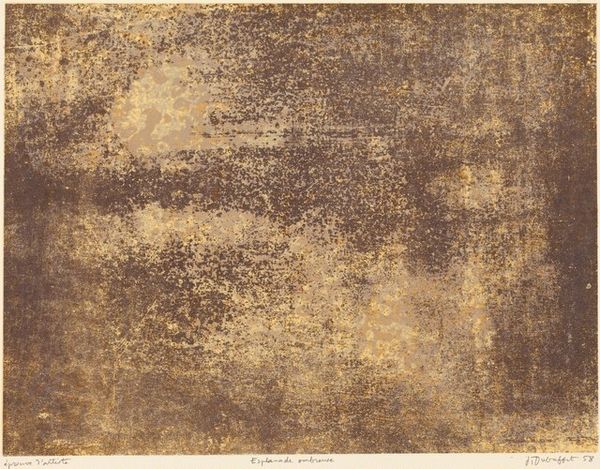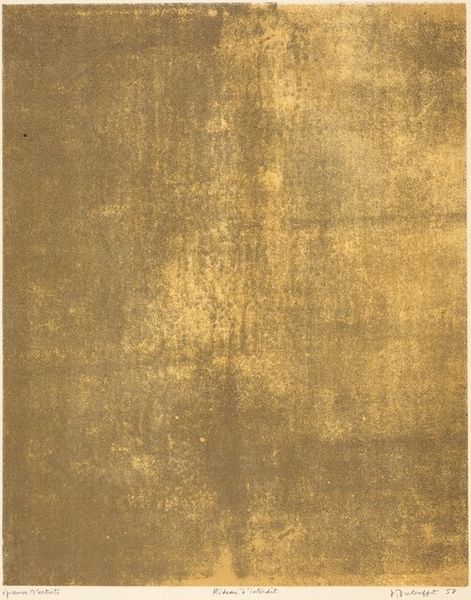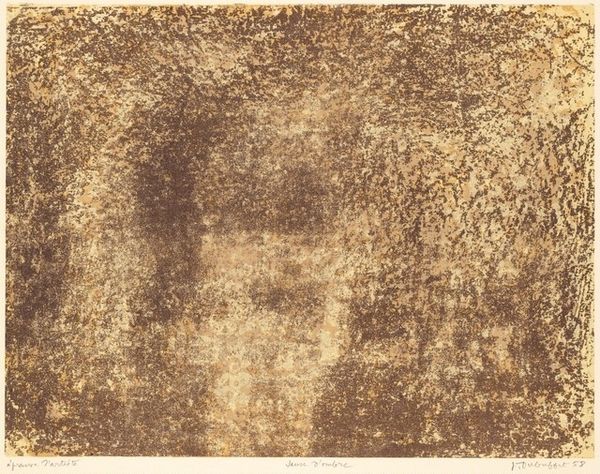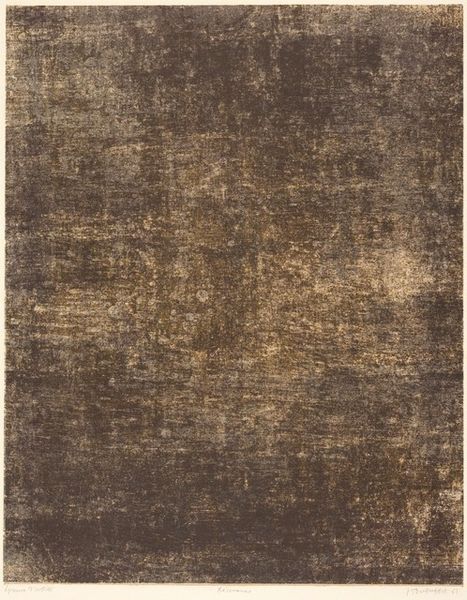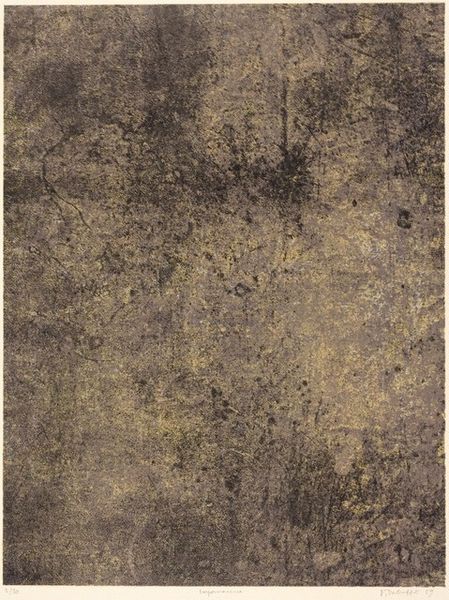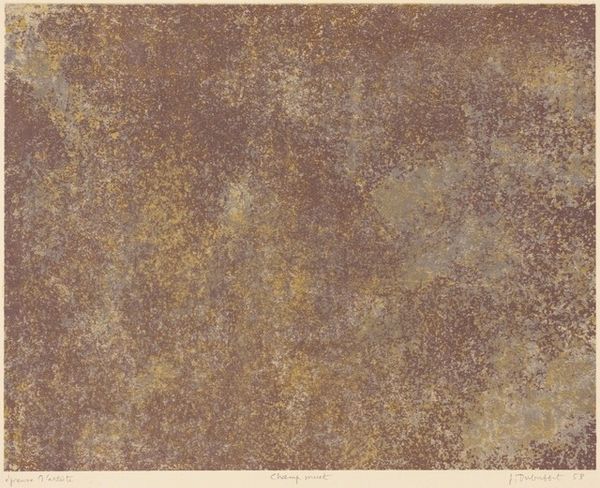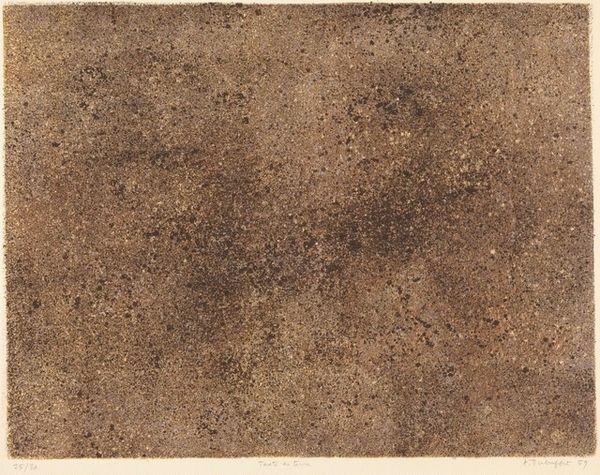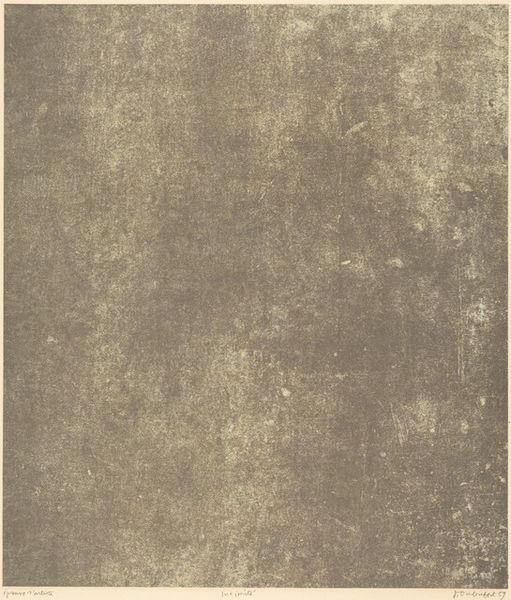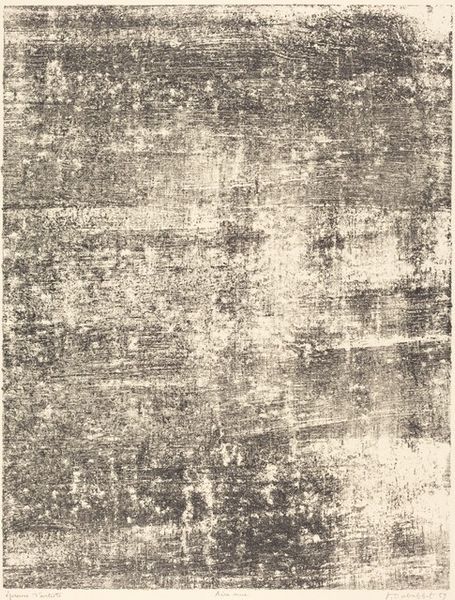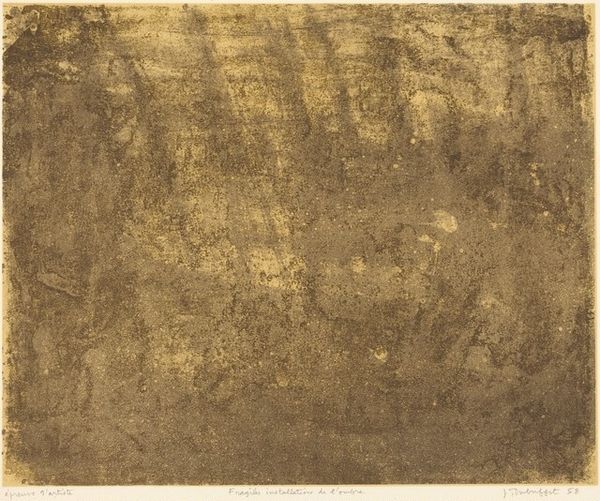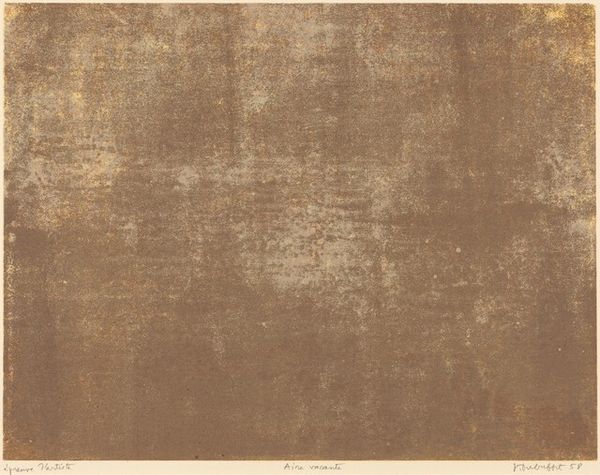
mixed-media, matter-painting, print
#
abstract-expressionism
#
mixed-media
#
matter-painting
#
non-objective-art
# print
#
organic pattern
#
art-informel
#
abstraction
Copyright: National Gallery of Art: CC0 1.0
Editor: So, here we have Jean Dubuffet's "Lit d'apaisement" from 1958, done using mixed media. It’s mostly browns and tans, very textured. It gives me a feeling of… worn earth, or maybe an old textile. What do you see in this piece? Curator: Well, "Lit d'apaisement," or "Bed of Peace," invites us to consider the relationship between art and societal anxiety in the postwar era. Dubuffet, aligning himself with Art Informel, vehemently rejected traditional notions of beauty. This work isn't about escapism; it’s a confrontation with the rawness and seeming chaos of existence. Editor: Confrontation? That's interesting. How so? Curator: Dubuffet was deeply critical of what he saw as the soul-crushing conformity of bourgeois society and its impact on the individual. He deliberately employed crude materials and techniques—matter painting, in this case—to challenge those aesthetic norms. He was interested in art brut, a raw expression free from academic constraints. Do you think this “bed” looks particularly comfortable or peaceful in a conventional sense? Editor: Not really. It seems… almost abrasive. I guess that's the point? Curator: Precisely. Think of the post-war context: the looming threat of nuclear annihilation, the psychological fallout from global conflict. Dubuffet gives voice to this unspoken unease, this collective trauma, stripping bare the myth of progress. The materiality speaks of the damage inflicted. Editor: It's like he's reflecting the world’s ugliness back at us, but almost hoping we can find some kind of, maybe, acceptance in it? Curator: Acceptance, yes, or at least an honest reckoning. Understanding his intent provides a language to articulate the unspoken tensions that shaped this era and continue to influence our own. Editor: I’ll definitely look at Art Informel differently now, less about abstract shapes and more about societal anxieties and using art as protest. Curator: Exactly! It’s about interrogating, and ultimately challenging, the narratives we inherit.
Comments
No comments
Be the first to comment and join the conversation on the ultimate creative platform.
